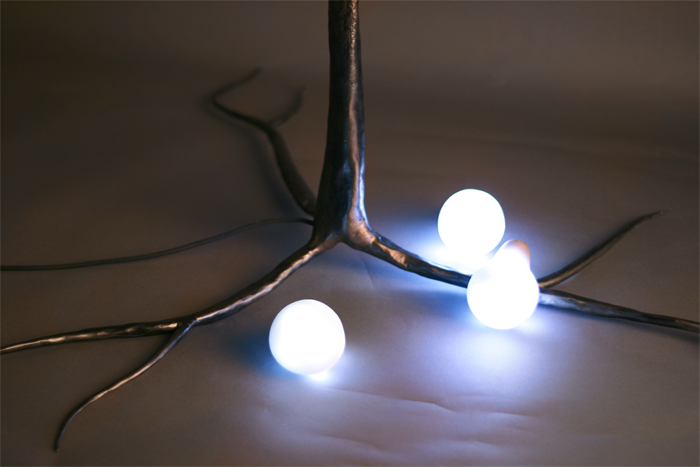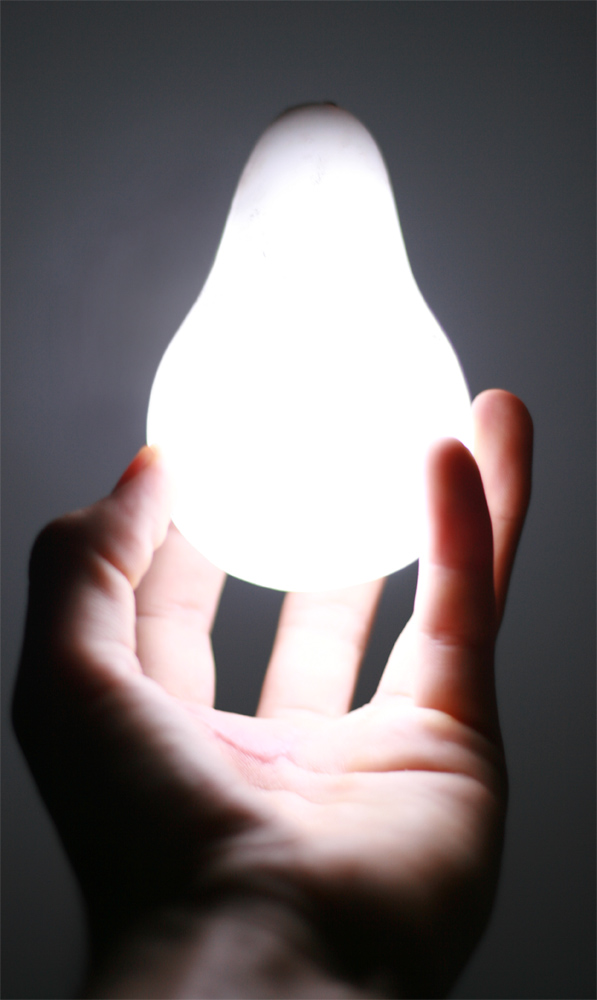Scientists send probes into deep space in an attempt to get a better understanding of the unknown. Philips Design does something similar with its own probes projects. These ‘far-future’ research initiatives often track trends and developments that are no more than tiny blips on the cultural radar, but which may ultimately evolve into mainstream issues that have a significant impact on Philips’ business.

“Obviously it’s extremely difficult to accurately anticipate what’s going to happen in the future,” says Clive van Heerden, Senior Director of design-led innovation at Philips Design. “That’s not our goal. With probes, we study emerging trends and behavior and examine the link with associated technologies that, in a number of years time, may be relevant for our business.”
This involves tracking developments in five main areas – politics, economics, environment, technology and culture. This could be anything from assessing the impact of the dwindling oil supplies to studying cultural migrations in an increasingly homogenized world, e.g. how a phenomenon like ‘hip hop’ emerges in the Bronx in New York and influences the way in which kids in Poland are dressing two years later.
What is also important, according to Van Heerden, is understanding events in their historical context. “If you relate social development and technical innovation to the cycles and patterns that have occurred down through the years, you have a clearer picture of why things happen and what to expect in the future. As an example, the development of the aircraft was accelerated by the World War 1, while the same can be said for jet power in World War 2. Crisis is a major catalyst for innovation and understanding contemporary tensions is a pointer to the direction of social and technological development.”
Challenging conventions
There are three main phases to each probes project; generating what is known as a disruptive scenario, creating a provocation based on the scenario, and then carrying out an evaluation. “One of our main aims is to challenge conventional ways of thinking and to come up with concepts that really make people sit up and take notice,” says Lucy McRae, Body Architect at Philips Design. Although some of these concepts may seem at first glance to be extremely ‘off the wall’ and far removed from everyday Philips activities, they are none the less valuable seeds for the innovation process. As Van Heerden says; “If you can’t lay an egg once in a while, nothing will ever hatch.”
Three main probe projects are currently being carried out; SKIN tattoo, SMELL and Sustainable Habitat. The SKIN tattoo project follows on from the work that saw the creation of ‘the Probes dresses’ (see new value by Design issue 30). “We believe that the body is a platform for interactive technology,” says McRae, who has been heavily involved in numerous probe projects. “In this context, it is fascinating to examine the growing trend in extreme body adornment like tattoos, piercings, implants or scarring and how this will evolve 15 or 20 years from now.”
The tattoo that changes
This led to the concept of the electronic tattoo. By using electronic, addressable ink, people could have dynamic tattoos that offer an infinite number of display options. “Fashion is impermanent” says McRae, “and people are using more temporary ways of expressing themselves. In much the same way as women can put on and take
off make-up to suit an occasion, your tattoo could morph and re-morph itself whenever you desired.” The tattoos could even change in response to gesture or emotion; interacting and growing with the touch of a lover, this opens up indirect ways of communicating and interacting with others.
“It’s time for people to take the body seriously as a platform for expression,” adds Van Heerden. “Technology is going to be invading the body in a variety of different ways. It’s necessary for us, as a company, to anticipate potential applications for these technologies but also the ever changing culture that we introduce applications into.”
The SMELL probe is currently being carried out together with James Auger at the Royal College of Art in London. “There is a great deal of cultural taboo about body odors,” he adds. “But that doesn’t mean it’s not worth exploring. Tests have shown that women can identify the most genetically suitable partner for reproduction purely on the basis of smelling a T-shirt he has worn. We wanted to find out more about the power of fragrance.”
Blind date with a difference
In SMELL, a prototype apparatus was created which basically captures odors from the body and not only communicates them to the wearer but also to other people. “James Auger called it Blind Date,” says Jack Mama, Creative Director of the program. “It’s very provocative, yet it’s also relevant. Dogs are reputedly able to sniff
out cancer, so our work may initiate dialogue around the possibilities of smell-based diagnoses. Who knows? That would be an extremely interesting proposition for our Medical Systems division.”
But how are the topics selected for probe projects? “On the one hand there is a kind of evolutionary process going on,” says Van Heerden. “Early explorations into electronic wearability, like New Nomads, made us curious about the space between apparel and the body which led to the first SKIN probe and then SKIN tattoo. SMELL is another extension of that. But, we also investigate subjects where there is a more obvious imperative, such as sustainability.”
The Sustainable Habitat probe falls into the last category. It looks at scenarios in which oil prices continue to rise and environmental damage is irreversible. “One possible outcome is that the built environment becomes active; the walls, roofs and floors have much more than just a structural function,” says Van Heerden. “Outer shells of buildings may be constructed to trap rainwater so it can be purified on-site for drinking. Sunlight may also be
captured to provide electricity and water heating, while the wind outside could conceivably be harnessed and channeled into the building for air-conditioning.”
Not just another brick in the wall
This is an extraordinarily relevant issue. In China, the focus of Sustainable Habitat, there’s talk of 200 new Chinese cities being created, each with a planned population in excess of one million. Shanghai may have 40 million inhabitants within a couple of decades. New apartments will be produced on a scale similar to tins of baked beans, and in some cases not a great deal larger. “A living space of 40m² may be the norm,” says Van Heerden.
At the same time, the country already has massive energy issues as well as shortages of water and raw materials. “This is a tremendous opportunity for a more sustainable approach,” he continues. “And maybe a probe like this could conclude that Philips’ future might take new directions such as intelligent and dynamic materials for mass
housing which incorporate electronics and offer a whole variety of functions. That 40m² has got to behave like 80m², so we have to rethink the performance requirements of everything from a brick to a wall or door.”
Generating business ideas
The probes program, according to Van Heerden, has resulted in research being carried out in many different areas over the years, but is now being formalized in a way that gives a lot more structure. “And, more importantly, we want to focus on generating new business ideas,” he says. “We look so far forward because we can then extrapolate backwards and positively influence our activities in the near future.”
“If you look at Sustainable Habitat, some of the product and service concepts are already generating interest, because the notion of sustainability has firmly become rooted in mainstream consciousness,” he continues. “Two and a half years ago when we talked about this kind of issue people thought we were being alarmist – now it makes perfect sense. That’s how quickly the cultural tide can turn, and it shows the value of our probes program.”
via
Philips









 Personal Transport Concept - Toyota's i-Real (VIDEO)
Personal Transport Concept - Toyota's i-Real (VIDEO) Luxury Underwater Hotel in Dubai - Hydropolis to Open This Month (GALLERY)
Luxury Underwater Hotel in Dubai - Hydropolis to Open This Month (GALLERY) Breathtaking Bedrooms - Interior Design to Stimulate the Senses (GALLERY)
Breathtaking Bedrooms - Interior Design to Stimulate the Senses (GALLERY) Bath/Shower/Sink & Shower/Sink Combo - Ebb Concept
Bath/Shower/Sink & Shower/Sink Combo - Ebb Concept


























